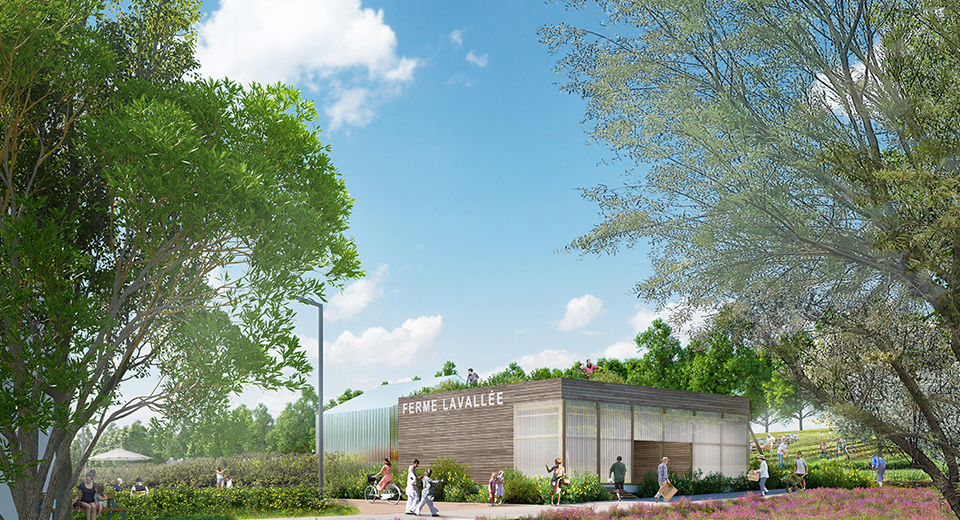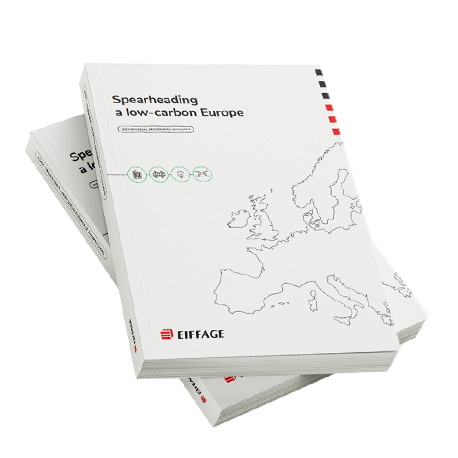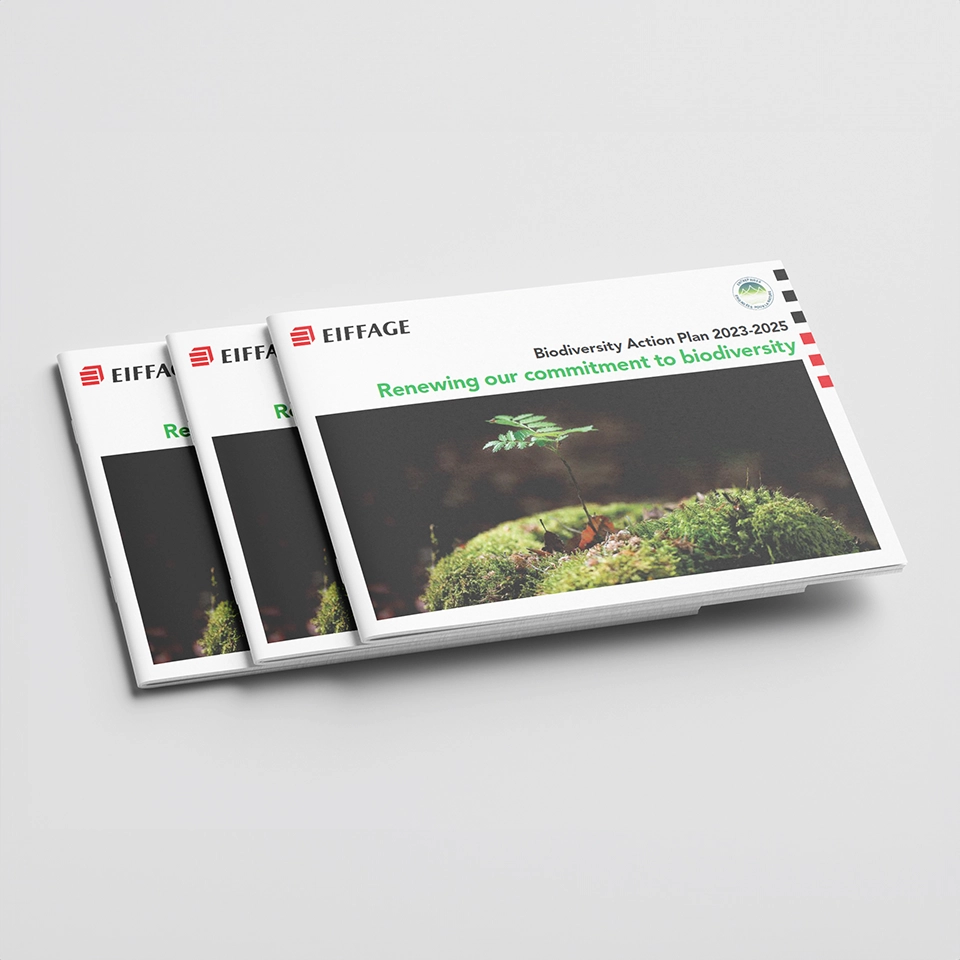Our strategy to preserve biodiversity
Launched in 2009, our biodiversity strategy is built on an in-depth analysis of the way in which our business lines depend on ecosystem services. It takes a dual approach – leveraging risk management and the detailed assessment of the impact of our operations on the natural environment; and identifying all considerations related to biodiversity, every single one of which represents a potential growth driver for the Group and its clients, especially in terms of research and innovation. Ultimately, this helps the Group to reduce its impact on the environment and nature.
Assessing dependence and impact
The process to define the Group’s biodiversity strategy involved a rigorous assessment of operations in terms of the dependence, impact and risk to natural environments and ecosystem services. The Eiffage Group analyses its dependence on ecosystems to ensure it systematically seeks to protect the living world when carrying out its operations. As every company and human society, our Group is dependent on the services provided by biodiversity, which break down into three main categories: supply, the ability to regulate, and the ability to develop and spread a corporate culture. The Group’s activities all depend on biodiversity, one way or another, either directly or indirectly.
Detailed analysis of the ways in which the Group’s operations depend on nature
In our biodiversity action plan, we have mapped the ways in which the Group’s operations depend on nature, before grouping them together in categories, identifying which are shared by more than one business line and assessing their importance (low, high or major). A major dependence is where there is no available substitute.
In addition to analysing the ways in which the Group depends on nature, Eiffage assesses the impact of its operations on biodiversity, which looks into five main drivers of biodiversity erosion due to human activity. These drivers have been identified by the Intergovernmental Science-Policy Platform on Biodiversity and Ecosystem Services (IPBES), an independent intergovernmental body specialised in matters related to biodiversity.
- Direct impacts: arising from action taken by the company
- Indirect impacts: secondary or induced effects
- Upstream impacts: related to the supply of materials/products and services
- In situ impacts: caused by worksites, production procedures, construction, as well as facility operation and management
- Downstream impacts: related to the distribution, use and end of life of the product/service
Our operations have a range of different impacts on biodiversity that vary according to the Group’s business lines.
- Internal operations (support functions and activities at head office, branches and site base camps): the impact on biodiversity is felt primarily upstream for building and asset construction projects, and in situ for facility operations.
- Concession and property activities: the impacts are primarily indirect, related to the construction, operation and maintenance of the structures financed, in particular the induced carbon emissions in buildings and facilities built and the induced carbon emissions and pollution caused by vehicles and trains operating on the infrastructure.
- Worksite operations (buildings, energy infrastructure and transport infrastructure): the impacts mainly arise in situ for construction work and upstream for materials supply. There is also a risk of impact downstream if invasive alien species (IAS) are released.
- Quarries: the impacts mainly arise in situ, during extraction work, and to a certain extent downstream caused by transporting materials.
- Industry (metal and road): the impacts arise upstream (due to raw material supply and the industrial facility), in situ (emissions generated by processes) and downstream (impact of transport, potential asphalt heating and pollution caused by washing).
Risk management to protect biodiversity
In its non-financial performance statement, Eiffage identified the full spectrum of risks inherent to the Group’s activities, including those related to the environment and biodiversity.
Identifying opportunities
Developing new products and services
Each biodiversity challenge identified constitutes an opportunity for the Group’s business lines. They act as considerable growth drivers and offer a tremendous boost to research and innovation, as is the case with soil decontamination, revegetation and greening and use of bio-based materials in construction for example. All Eiffage business lines take biodiversity into consideration to develop new products and services that enable their clients to reduce their own impact on the environment.
Urban agriculture and the E3S research programme
We integrate urban agriculture into our urban development projects to promote the systematic inclusion of plants, vegetation and fruit and vegetable production. A significant amount of space is also accorded to green clusters in the urban areas we develop, both to create a comfortable and pleasant space to live and as an effective way to cool air temperature and tackle heat waves. We harness research and innovation to guide our efforts. The E3S research programme, which brings together over 25 experts from Eiffage and 60 researchers, offers one such illustration of the process. Developed in partnership with the university consortium, I-Site Future, the programme involves a number of themed workshops that cover all elements of a sustainable city, including civil engineering, energy, construction, healthcare and sociology. Research efforts focus on the best way to integrate nature in an urban setting and the importance of green clusters, among other things. They run in parallel to the €2 million construction of the LaVallée eco-district in Châtenay-Malabry, south of Paris. Research began in 2018 and will continue through to 2025.

Ecological engineering and the Brittany—Pays-de-Loire high speed rail line
To develop our most important projects – railway and motorway infrastructure in particular – we harness our expertise in ecological engineering and our partnerships with various environment specialists. It enables us to integrate our services in specific mechanisms that protect ecosystems, such as water decontamination, restoration, renovation and renaturing of natural or aquatic environments.
The project to build the Brittany—Pays-de-Loire high speed rail line (BPL HSL) positioned the protection of natural environments and species living in the areas surrounding the route as a priority, right from the design stage.
For example, to improve the installation of culverts or tunnels to enable small animals to cross roads, ponds were built either side of the infrastructure.
Furthermore, in order to eliminate vegetation that could pose a safety problem along the high speed rail line, OPERE, the Eiffage subsidiary in charge of operating the line, is trialling a high-tech train that uses smart sensors to reduce the use of pesticides when weeding the line. The train sprays weeds with a high level of precision and uses advanced geolocation technology to avoid applying pesticides in any areas where they are prohibited.
-
-
Nature in an urban setting and urban agriculture
Eiffage is stepping up the number of initiatives to introduce nature into urban settings, through urban agriculture, planted areas and green clusters.
-
Bretagne-Pays de la Loire high-speed line
182 km of railway, 240 engineering structures

